Spotlight Story
Gushing over L.A.’s new civic park
August 19, 2012

Never heard of Arthur J. Will? That’s about to change.
For decades, a fountain tucked between the Hall of Administration and the courthouse has carried Will’s name, honoring his work in creating the Civic Center Mall during the late 1950s while serving as the county’s chief administrative officer.
But the truth is that, outside of a couple cameo appearances in the movies “Pretty Woman” and “500 Days of Summer,” the Arthur J. Will Memorial Fountain has remained mostly anonymous, its street-level view completely obscured by two concrete parking-lot ramps on Grand Avenue.
Now, the 1960s-era fountain is being spectacularly re-imagined for a starring role in a $56-million transformation of Will’s long overlooked public space, which stretches from the Music Center to City Hall. The parking ramps have been demolished and moved, and the fountain has been restored under the watchful eye of the Los Angeles Conservancy.
In recent days, the fountain has been tested for the first time since it was turned off in July, 2010. Last Monday, a nighttime run-through of the fountain’s stunning new kaleidoscopic hues brought smiles of satisfaction—and relief—to the team responsible for the $5.2 million makeover. (For a front row seat at the testing, take a look at our video, linked above.)
“This is a huge milestone to have this be so successful and so enticing,” said project manager Dawn McDivitt of the county’s Chief Executive Office. “We can’t wait to show it off to the community.”
The fountain, which is now also more energy efficient, will remain closed to the public until late summer or early fall, when all four blocks of the 12-acre park project are completed. Currently called Civic Park, it’s designed to create a sense of place in a downtown on the rise, with a performance lawn, a grand event lawn, ADA-accessible walkways, a dog run and a community terrace area showcasing plants from around the world.
But it’s the fountain—with its new prominence and engaging interactive features—that promises to be one of the park’s biggest draws.
Karen Adhikari of Fluidity Design Consultants, which oversaw the fountain’s restoration and expansion, said the Los Angeles Conservancy required that the existing structure be kept largely intact, most notably the space-age-styled granite and concrete “bowl.” What’s more, material used in the restoration, she said, needed to precisely replicate the original look.
But the conservancy also signed-off on a dramatic modernization: a ¼-inch-deep “membrane pool” with 79 interactive jets and a dark granite bottom that produces crisp reflections of the fountain and surrounding buildings, including the Dorothy Chandler Pavilion. Designers of the 6,200-square-foot pool would like to see visitors of all ages wade in.
“We hope that people will find this a peaceful place, an active place, a place that is constantly changing and never repetitive,” said Adhikari, whose company worked in tandem with the construction firm of Outside the Lines.
For months, wood fences along Grand Avenue concealed from public view the fountain’s sparkling renovation. But last December, that didn’t deter one particularly determined passerby from trying to get a peek. He had reason to be more curious than most. His father was the fountain’s namesake, Arthur J. Will.
Robert Will said he was driving along Grand Avenue with friends after a downtown lunch when he saw the fences and pulled to the curb.
“I got out, jumped up and peered over the fences,” said the 80-year-old Will, a retired Washington D.C. lobbyist. That’s when he says he was approached by security officers, who ordered him to move along.
“I want to look at the fountain,” Will said he responded. “They were very polite but they still said, ‘Get out of there!’ ”
Two weeks ago, pursuing a more conventional route, Will wrote a letter to the county’s current chief executive officer, William T Fujioka, saying that he and his family would like to attend the dedication of the fountain and the new park later this year—a request the CEO’s office says it will be thrilled to honor.
“My dad was so proud of the mall,” said Will. “It was his baby.”
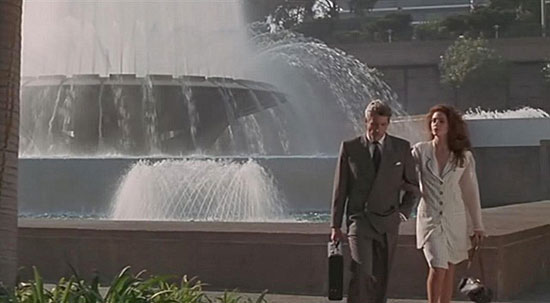
The Arthur J. Will fountain shares the screen with Richared Gere and Julia Roberts in 1990's "Pretty Woman."
Posted 5/1/12
Quite an Endeavour
August 8, 2012

To get to Los Angeles, the space shuttle will hitch a ride on a 747, as it did here on an earlier mission.
Get ready, L.A., the space shuttle Endeavour will soon be rolling like a rock star.
On October 12, weather permitting, the decommissioned shuttle will begin a three-day, 12-mile journey from Los Angeles International Airport to the California Science Center in Exposition Park, the orbiter’s new retirement home.
Officials predict that the 2-m.p.h. urban journey will draw thousands of onlookers, reminiscent of the raucous crowds that turned out for The Rock’s four-county crawl to the Los Angeles Museum of Art, where it became the centerpiece of artist Michael Heizer’s “Levitated Mass.” The shuttle’s passage will mostly take place along Manchester Avenue, Crenshaw Boulevard and Martin Luther King Boulevard. (See map below.)
Mayor Antonio Villaraigosa, who joined Science Center and NASA officials to announce Endeavour’s itinerary, called the upcoming transport a “once-in-a-lifetime event” for the Los Angeles region, which he noted shares a long and storied history with aeronautics and space exploration. Just this week, scientists at JPL in Pasadena made history with the high-risk touch-down of the rover Curiosity on Mars.
In all, Endeavour completed 25 flights, totaling 4,671 Earth orbits. It was built to replace the Challenger, which exploded shortly after takeoff in 1986, claiming the lives of all 7 astronauts. Endeavour flew its final mission to the International Space Station in May of last year. Among the orbiter’s final crew was Commander Mike Kelly, whose wife, former Arizona Rep. Gabrielle Giffords was seriously wounded by a gunman last year.
With the 30-year shuttle program now over, Endeavour is one of three shuttles that will go on display around the country, and the first to travel along city streets. The others—Discovery at the Smithsonian outside Washington, D.C. and Atlantis in Florida—have already been delivered.
Endeavor is scheduled to arrive at LAX from Florida’s Kennedy Space Center on September 20, riding piggyback on a Boeing 747. That date, however, is dependent on weather conditions, said Stephanie Stilson of NASA, a key player in the transport. “Water drops can become like BB’s” on the fragile surface of the 170,000-pound craft, she said.
After the shuttle is removed from its carrier with a series of cranes and slings, it will be placed on the “Overland Transporter,” a frame built by NASA for “state of the art maneuverability and stability,” according to the agency.
And it’ll need it.
Some stretches of the passage to the Science Center are so narrow that some trees may need to be removed to accommodate the craft’s 78-foot wingspan. In those cases, two trees will be planted for each one that must be uprooted. Villaraigosa said that, like the shuttle itself, its earth-bound journey will be “a marvel of ingenuity and engineering.”
Along the way, on October 13, there’ll be an official ceremony at Inglewood City Hall in the morning and a curbside celebration that evening produced by dancer/choreographer Debbie Allen at the intersection of MLK and Crenshaw boulevards.
At the Science Center, the spacecraft initially will be housed in a cavernous temporary hangar, which is scheduled to be open to the public starting October 30 for the exhibition “Mission 26: The Big Endeavor.” Eventually, the shuttle will be the centerpiece of the new Samuel Oschin Air and Space Center. The $200 million price for the new center and Endeavour’s transport is being underwritten by private donors.
View Mission 26: The Big Endeavour in a larger map
Posted 8/8/12
C’mon in, the water’s fine. Really.
July 25, 2012

Dancers splash in the Arthur J. Will fountain's new "membrane pool" during Thursday's dedication ceremony.
It’s big, it’s wet and it’s already making a big splash as the first segment of Los Angeles’ Grand Park opened this week.
The 6,200-square-foot pool in front of the restored Arthur J. Will Memorial Fountain has only a quarter-inch of water, but it’s likely to be a huge crowd magnet, says Jim Garland, president of Fluidity Design Consultants, which oversaw the fountain’s restoration and expansion.
“It’s going to be awesome,” says Garland. “There’s a similar pool around the Millennium Park Fountain in Chicago, and kids roll around in it, and people just love it, and it’s probably the most popular fountain today in the United States.”
But under the sleek, nonslip surface and its inviting jets of water, an elaborate system of machinery and maintenance workers will be hustling around the clock to keep that expanse—technically known as a “membrane pool”—clean. The pool’s filtration system was kept separate from the one used for the fountain itself, Garland says, because health codes set a higher standard of cleanliness for interactive water elements.
Every drop will circulate every half-hour through an underground filtration and disinfection system that will kill bacteria with ultraviolet light and chlorinate the water. Security guards will patrol to ensure that no one abuses the pool area or mistakes it for a bathtub. And the crews that monitor the fountain at the Dorothy Chandler Pavilion will manually test for cleanliness at least three times daily.

Barefoot in the park: Dignitaries like Eli Broad are among the first to take the plunge after Thursday's ribbon-cutting.
“It’s about a 10 minute test—we just take a water sample and drop in a tablet,” says Keith McTague, director of building services and chief engineer at the Music Center. “We’re mainly doing it as a check and balance on the filtration system, which is automatic, and so that the readings are documented. But if we have to do it more often, we will.”
These safeguards are crucial because, while the historic Will Memorial Fountain was designed to keep people out of its waters, the adjacent membrane pool was conceived as a way to entice kids and grown-ups alike into getting wet.
“Nobody was sure there would be money for an interactive area like that,” Garland says. “But…we all fought to keep it in.”
Much of the inspection and testing of the system will rest with the Department of Public Health environmental health unit which, among other duties, acts as the county’s “fountain police.”
Chief Environmental Health Specialist Bernard Franklin says the Grand Park membrane pool is different from the roughly two dozen other interactive fountains throughout the county. Most of those, he says, are “splash pads” in which water spurts from a dry deck surface—not like Grand Park, where jets are placed in an ever-present layer of water.
In fact, Franklin says, the Grand Park pool will be the last of its kind in the county after September, when revisions to the California Building Code and the California Code of Regulations will prohibit pools of standing water in fountains that encourage public interaction with the water.
Franklin, who helped author the new rules, says that while the Grand Park pool will be well maintained, others with a lesser design or oversight could generate potentially unhealthy conditions. “Pools like these can be big collectors if you’re not careful,” he says. “Dirt gets in them, pigeons and ducks come around them, people try to use them in ways they aren’t supposed to.”
To that end, camera monitors and round-the-clock security will be in place to discourage mischief and enforce rules that will, among other things, ban camping and skateboarding in the park.
The results promise to be well worth it.
As the designer Garland puts it: “At night, you’ve never seen anything like it. It’s going to be magical.”
Posted 7/26/12
Here’s a bright idea for the park
July 12, 2012
When Grand Park opens in the downtown Civic Center later this month, it won’t just be the show-stopping fountain and collection of internationally-inspired garden plantings that will have eyes popping—and tongues wagging.
Check out those benches.
Perhaps not since “festive federalism” stamped its exuberant, mid-‘80s color palette on the 1984 Olympics has such a comment-worthy color explosion rolled into L.A.
While most of the park itself remains out of view behind temporary chain-link fencing swathed in green mesh, a pair of its vibrantly-hued benches recently popped up outside the 2nd floor entrance to the Hall of Administration, where they’re visible to everyone passing by on the busy pedestrian corridor to and from Starbucks.
And everyone, it seems, has an opinion.
“Awesome. It’s fun. Different,” said Adrian Taghdiri, who’s interning in the County Counsel’s office.
“They’re cute, but it’s a little bright,” said Frances Espinosa of the Assessor’s Office.
“Beautiful!” said Zella Scott of the Treasurer-Tax Collector’s office.
“A little bit too loud for me. It’s like something out of the 1960s,” said Jesse (Jay) Luna of Public Health.
“Generally, with pink you think of breast cancer awareness. It’s different, I guess,” said MacKenzie Smith of the D.A.’s office.
“Will the boys not sit at the girls’ benches?” wondered Renee Rose, also of the D.A.’s office. “You’ll have to be very in touch with your masculine side not to be intimidated.”
“I like them, especially on a bright, warm, sunny day like today,” said attorney Ludlow Creary, passing through after an appearance in Federal Court. “They’re very inviting. I think it’s very L.A., but that’s not a bad thing. Something like this works in L.A.”
So what color are those benches, anyway? Officially termed magenta, the after-lunch crowd passing by this week offered its own interpretations, ranging from “kind of like a fuchsia, but with a little deep purple in it” to “hot pink!”
Technically a variation on the color known as Pantone 219C, the hue was toned down and “richened” by the park’s designer, Rios Clementi Hale Studios, and by JANUS et Cie, the firm hired to produce the custom-designed furniture that will adorn the 12-acre expanse. (In its original form, the color is also associated with Pantone Barbie and is a dead-ringer for “Lights” in Essie’s “Poppy-razzi” nail polish line. In other words, Elle Woods would love it.)
Even though it exudes an unmistakable sense of Southern California fun, the color choice has a far-from-frivolous role. It’s a key factor in establishing the new park’s identity, taking inspiration from a variety of influences around the world, including the green seating at Paris’ Tuileries Gardens.
“We obviously wanted to really create something iconic with the furniture,” said Tony Paradowski of Rios Clementi Hale. “Our idea was to have a floral quality throughout the year.” No matter what plants were in season, “the furniture would always be this kind of bloom-like color sensation throughout the garden.”
In addition to 26 freestanding benches and 41 wall-mounted benches, the park will offer furnishings that can be moved around by patrons: 120 café tables, 240 café chairs and 40 lounge chairs on the lawn.
Using unsecured furniture is “definitely a different model for Los Angeles, but in other cities this has been around for quite a while,” Paradowski said, citing New York’s Bryant Park and Hyde Park in London, where folding fabric chairs are rented out in nice weather. Grand Park’s around-the-clock security should help keep the chairs from walking away, as will a plan to tether furnishings together after-hours, he said.
As for the color, Paradowski thinks most people will come to love it, although he acknowledges that the benches “definitely ask for opinions.”
“We worked with the construction crew out there, and a lot of them said, ‘Wow, why’d you pick pink for the chairs?’ I think a lot of them are still scratching their heads.”
Posted 7/12/12
“Levitated Mass” rises to the occasion
June 24, 2012
With crowds, speeches, and even a rare appearance by its normally reclusive creator, Michael Heizer’s “Levitated Mass” finally opened on Sunday at the Los Angeles County Museum of Art.
“This is a monument to our own time and our own place and our own aspirations as people,” exulted LACMA Director Michael Govan, noting the months of public spectacle that accompanied the execution of the immense sculpture. “It does make the impossible possible.”
Surrounded by a geometric field of decomposed rock, the artwork—a 680,000-pound hunk of Riverside granite positioned atop a 456-foot-long concrete trench—basked in the L.A. sunshine. Birds perched on it. Palms swayed beside it. At one end, a Unocal billboard and a 99 Cent Store sign bedecked its horizon. Awestruck visitors gawked at the rock’s scale, called friends from beneath it and pretended to hoist it, creating, in the words of Curbed LA, an instant tradition of “boulder holding.”
Privately, Govan called it “an amazing, contemplative oasis in the middle of the busy metropolis.”
Heizer, dressed in a cowboy hat, cowboy boots and shades, had his own take as the crowd mobbed the Nevada earth artist, begging for autographs: “It isn’t a golf course, that’s for sure.”
Heizer conceived the sculpture 43 years ago, but didn’t complete it until he visited a granite quarry in Riverside County decades later and found the boulder that is its centerpiece. (Or, as Heizer joked in an interview on Sunday, “It found me.”)
“The Rock,” as it came to be known, captured Southern California’s imagination as it moved to LACMA from Jurupa Valley, inspiring block parties, traffic jams and marriage proposals. The 105-mile journey along surface streets was a feat not only of engineering but also of bureaucratic ingenuity, as the teardrop-shaped megalith traveled a circuitous route through four counties and 22 cities.
Maria Chong-Castillo, a public works deputy for Los Angeles County Supervisor Zev Yaroslavsky, was singled out during the dedication for troubleshooting the dozens of permits needed for The Rock’s move. (Terry Semel, co-chair of the LACMA Board of Trustees, told the audience that when the project was first proposed, “we thought this is either the best idea ever or it’s a total screw-up!”)
The project—which had been scheduled to open last November—was repeatedly delayed by demands for bonds from municipalities who feared their infrastructures couldn’t handle the load.
Those fears didn’t materialize. Still, as a thank-you, LACMA offered free admission to its galleries from now until July 1 to residents of the ZIP codes through which the rock passed during its 11-day journey (click here for the list).
Among the out-of-town dignitaries was Mayor Laura Roughton of Jurupa Valley, where the boulder was blasted out of the side of a mountain. “I love it!” said Roughton. “I went back to the quarry after The Rock left, and it seemed kind of lonely without it, but it’s probably getting the respect now that it deserves.”
Heizer was bemused at the hoopla. Born in California but living now in the Nevada desert, he was absent during The Rock’s highly publicized journey, arriving in L.A. only afterward to oversee the assembly of the piece. “We knew it was going to attract some attention,” he said, but to him it had more to do with the culture of Los Angeles than with his vision.
“L.A. is an automobile culture, and what you saw was just the biggest automobile in town goin’ down the road,” Heizer joked. “That’s why you got all excited. You just love cars.”
On Sunday, however, it was all about the art, as Govan, Semel, Yaroslavsky, Heizer and Los Angeles Mayor Antonio Villaraigosa cut a bright red ribbon (with some help from Govan’s young daughter), and a throng of hundreds mobbed the artwork.
Earlier public response had been a mix of admiration and shock at the piece’s privately financed price tag, a reported $10 million. As the boulder made its stately progress, clad in shiny white plastic shrink-wrap, some predicted it would be a masterpiece while others compared it to a 340-ton frozen turkey.
“People have asked me over the last few months how you justify dedicating these resources and this much space to something like this,” Yaroslavsky said to the crowd on Sunday. “But this going to become, along with Disney Hall and ‘Urban Light’ and the Hollywood Bowl, among the iconic views and visions of our region. . . Everyone will see this work in a different way.”
On Sunday, the crowd was mostly impressed, and most in attendance agreed that photos and TV coverage didn’t do justice to the impressive scale of the piece.
“It’s like a meteor!” gasped 5-year-old Adam Davis, clutching a book on Lego Star Wars Legos. “It’s like a meteor that fell down into the earth!”
“It’s gonna add a lot to the community,” agreed his father, Darren Davis, who lives near the museum. “It’s just amazing to have such a persistent piece of history for everyone to enjoy.”
Photo gallery below by Los Angeles County photographer Martin Zamora.
Posted 6/24/12
Do beach report cards make the grade?
June 14, 2012
Summer is almost here, with news from the coastline: More than 80% of the county’s beaches are clean.
Or are they?
Beach report cards such as those generated by Heal the Bay and Los Angeles County raise public consciousness and spur crucial cleanup efforts. But what do they really mean?
Chad Nelsen, environmental director of the San Clemente-based Surfrider Foundation, says he views beach grades and report cards as a rough-but-useful guide to a beach’s overall cleanliness and history. Beach grades aren’t same-day evaluations, he notes, and they don’t yet say enough about why a beach’s bacteria level may be elevated.
“Any given beach can be clean on any given day, but these kinds of report cards look at the average,” says Nelsen. “They can tell you if a beach is chronically polluted or typically clean.”
Beach grades are culled from ocean water samples collected from hundreds of coastal locations. In Los Angeles County, the Department of Public Health samples the water weekly at 40 sites between the Ventura County line and the Redondo Beach Pier, plus five sites between April and October at Avalon Beach on Catalina Island.
In addition, the department reviews monitoring results from scores of samples taken by the Los Angeles Bureau of Sanitation, the Hyperion water treatment plant and the Los Angeles County Sanitation District.
Those samples are tested for total coliform, fecal coliform, and enterococcus bacteria—so-called “indicator” bacteria that signal the presence of agents that can make swimmers sick. The results are compared to state water quality standards and updated each week by the Department of Public Health. Then they are turned into a rolling 30-day online “report card” that grades the water quality at each beach from A to F.
The test results also are shared with Heal the Bay, a nonprofit environmental watchdog group that analyzes water quality at hundreds of beaches along the West Coast and posts its own weekly beach-by-beach assessment, as well as a comprehensive annual report published in May.
Surfrider’s Nelsen compares beach grades to “a spelling class, with a bunch of weekly quizzes.”
“You might get an A or a B or even an F on a given week, but if the scores average out to an A at the end of the month or the end of the year, you’re probably doing pretty well.”
This year’s Heal the Bay report had mixed reviews for L.A. County: Some 82% of the county’s beaches had earned dry-weather grades of A or B last year, a 7-point improvement over the prior year. But the county was still below the statewide average, and trouble spots persisted in places like Avalon and Malibu.
The reasons for those scores tend to defy simplification.
Ken Murray, who directs the Department of Public Health’s Bureau of Environmental Protection, says the test results, and therefore the grades, are impacted by all sorts of factors—weather, water depth, whether the sample was taken near or far from the mouth of a storm drain, even the number of birds in the area.
Pollution control efforts inland can make a big difference. Malibu’s new Legacy Park, for example, is essentially a grassy, state-of-the-art system for capturing urban runoff. And Murray says a new rainwater harvesting system at Penmar Park in Venice “is really going to help the water quality in the beaches because runoff there is going to be captured and treated—and used to water the Penmar Park golf course—before it can hit the bay.”
Precipitation is also a major factor. A beach that is Grade A in dry weather can be rendered unfit overnight by a heavy rain and the ensuing runoff, and be perfectly swimmable again in less than a week as bad bacteria are dispersed by waves and killed by sunshine.
Long Beach, for instance, was a coastal success story this year, partly because of big projects upstream that diverted runoff, upgraded sewers and reduced the tons of debris that the Los Angeles River dumps out onto its beaches. But city officials noted that part of that sharp improvement—93 percent of the city’s beaches recorded A or B grades on the Heal the Bay scorecard—may also have simply stemmed from a relative lack of rain.
Avalon, meanwhile, has been a chronic low scorer and officials have spent years trying to pin down the reasons. “We had thought the problem was sewage lines around Avalon Harbor,” Murray says. “But they spent millions to repair that, and the bacteria levels are still high.”
More tests—these ones on boats—were similarly inconclusive. Now Avalon’s antiquated sewers are undergoing a new, multi-million-dollar round of repairs, and the city is under a cease-and-desist order from the state to clean up its water. Also, Murray says, a team of UC Irvine researchers is studying Avalon “to give us a new set of eyes.”
Amanda Griesbach, a Heal the Bay water quality scientist, says the science is evolving. Someday, she predicts, beachgoers will be able to tell the cleanliness of the water with a single, same-day dipstick test that will be posted at each beach and may even suggest a pollutant’s origin.
“When that happens—and that’s where the science is heading—it will be awesome,” says Griesbach. “But right now, the existing methods are the best we have.”
Posted 6/14/12
These jailhouse lawyers work for us
June 13, 2012
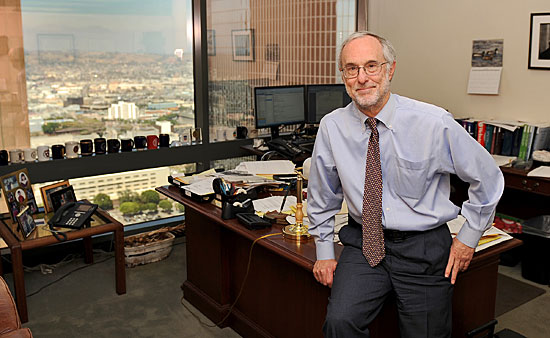
Former federal prosecutor Richard E. Drooyan is leading the investigation of deputy force in the county's jails.
When it comes to police scandal and reform, attorney Richard E. Drooyan has found no shortage of opportunity in Los Angeles.
A former high-ranking member of the U.S. Attorney’s Office, he served on the Christopher Commission after the Rodney King beating and helped lead an independent inquiry into corruption by anti-gang officers in the LAPD’s Rampart Division.
Now, he’s back, this time as general counsel to the Citizens’ Commission on Jail Violence, a panel created in October by the Board of Supervisors to investigate alleged brutality and management failures in the county jail system. The commission is packed with marquee names in law enforcement and legal circles. But it’s the lesser-known Drooyan who’s largely orchestrating the historic effort—with the quiet help of some of Los Angeles’ most prestigious law firms.
Drooyan is drawing on a model that dates back to the Christopher Commission, one not widely known beyond Los Angeles’ legal community. Today, as in the past, he’s drafted an army of high-powered lawyers to conduct every facet of the investigation, assigning each with responsibility for a specific area of inquiry. Those attorneys, in turn, have dipped into the ranks of their own firms.
In all, some 50 lawyers, representing ten firms, have been pressed into action—without a single billable hour among them.
“Fortunately, there’s been a history of very talented lawyers in the town’s top firms who’ve been willing to devote pro bono hours to these kinds of investigations,” Drooyan said from his office at Munger, Tolles & Olson. “The reality is, you need experienced people who can devote a lot of time and energy but you don’t have the budget to pay them. If you were to add up the final billable hours for the jail commission, it would be north of seven figures.”
The payoff, so far, has been substantial. This unsung cadre of legal firepower has identified and interviewed scores of witnesses, reviewed hundreds of documents and, in a series of public hearings, elicited dramatic testimony suggesting that the department’s second-in-command contributed to a climate in which jail deputies used unnecessary force.
The Commission’s chair, retired federal judge Lourdes Baird said the legal team has become “an integral part of our commission’s efforts” and “exemplifies the best of public service in our legal community.”
One of the recruited attorneys is Nancy Sher Cohen of Proskauer Rose, who calls herself a “worker bee for the commission.” Like Drooyan, Cohen also served on the Rampart panel. “Most of us tend to work on corporate litigation,” she explained. “Of course, you love your clients but this has a social justice piece that makes it very special.”
Bert Deixler, who served with Drooyan on the Christopher Commission and has been tapped for the jail study, says the unique investigative approach also provides newer attorneys with the experience of having societal impact while serving with seasoned law veterans across the city, a rare opportunity in a highly structured business.
“You take some young stars in your firm and say, ‘Here’s a chance to pay it forward.’ There’s a sense for all of us that this is part of what lawyers are supposed to do. It’s not just about collecting money,” says Deixler, a former member of the U.S. Attorney’s Office who’s now a partner with Kendall Brill & Klieger.
To get a feel for the job at hand, the recruited lawyers toured the troubled Men’s Central Jail on the edge of downtown, built mostly during the early 1960s. With more than 4,000 inmates packed into dark cells, it’s become the primary focus of the commission’s inquiry.
“For those who hadn’t seen it before, they came away from the experience feeling speechless,” said the commission’s executive director, Miriam Krinsky, who went on five of the trips. “It can’t help but hang with you.”
The attorneys assembled by Drooyan are a formidable group. Many are former federal prosecutors—skilled investigators with experience in analyzing data and coaxing reluctant witnesses to come forward. Already, their effectiveness has been on display during a series of headline-generating hearings during the past several months.
This was particularly true on May 14, when Drooyan presented as witnesses three retired jail supervisors. Their testimony went beyond the more familiar allegations of brutality and suggested that a series of moves by a top Sheriff’s Department manager undermined jail supervisors and led to higher levels of excessive force.
They described a culture in which longtime jail deputies—who, like some behind the bars, dub themselves OG’s, short for “Original Gangsters”—seemed to carry more clout than their bosses. Retired Sergeant Daniel Pollaro told of insubordinate deputies changing work assignments that their supervisors had created to break up “cliques” on floors throughout Men’s Central Jail. Retired Lt. Alfred Gonzales, meanwhile, recounted, among other things, the resistance he met while patrolling those floors in an effort to keep deputies in line and out of trouble, a practice not embraced by his predecessors.
But the testimony that raised the most eyebrows was Gonzales’ account of a meeting that then-Asst. Sheriff Paul Tanaka convened with jail supervisors in 2006, which followed an unusual closed-door session he’d held with complaining deputies.
“You guys are a bunch of dinosaurs,” Gonzales quoted Tanaka as saying. “Your supervisorial skills are antiquated.” According to Gonzales, Tanaka instructed the supervisors to “coddle” the deputies and to “stay off those floors and let those deputies do what they have to do.”
“The chain of command was totally broken,” Gonzales testified.
Tanaka, now the department’s undersheriff, is scheduled to appear before the commission in late July, along with Sheriff Leroy Baca. Neither has commented on last month’s testimony.
By all accounts, one of the biggest challenges for this commission—like others before it—is not only to identify witnesses but also to get them to testify publicly.
Drooyan said that Gonzales and Pollaro agreed to testify because after spending much of their working lives in the Sheriff’s Department, “they genuinely wanted to see issues addressed that were of deep concern to them.”
Sometimes, though, it can be tougher, especially in eliciting cooperation from current members of the department.
“They feel their careers are on the line,” said Fernando Aenlle-Rocha, a former federal prosecutor who’s now with the firm of White & Case. “We don’t have subpoena power and we can’t immunize people—the kind of tools that are given to prosecutors. You can just use your persuasive skills.”
So far, according to a recent commission status report, more than 150 potential witnesses have been identified between the five investigative teams created to examine the jail system’s management and oversight, use of force, culture, discipline and personnel. Each team will write a chapter for the commission’s final report, which is expected to be issued in early fall after more hearings. The full commission has met nine times to date. A committee held its first community forum on May 30.
Executive Director Krinsky stressed that the Sheriff’s Department and the commission have been extremely cooperative with each other. “It’s not a ‘gotcha,’ ” she said.
Drooyan agreed, adding that Baca himself has personally assisted in the commission’s requests for information.
“Everybody,” Drooyan said, “wants to improve the jail.”
Updated: At the Decemember, 4, 2012, meeting of the Board of Supervisors, Drooyan was appointed to oversee implementation of more than 60 reforms recommended by the jail commmision in its final report, which was released in September. Click here to read it.
Posted 6/13/12
Righting a wrong, 70 years later
June 7, 2012
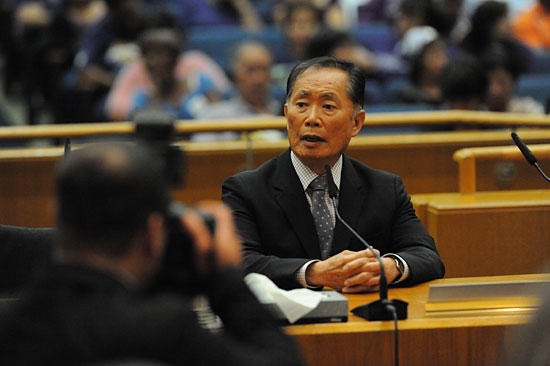
Actor George Takei's testimony drew a standing ovation at the Board of Supervisors meeting Wednesday.
The forced uprooting of Los Angeles County’s Japanese American community took place seven decades ago—but the emotional wounds it inflicted continue to this day.
A series of speakers—including Star Trek legend George Takei—vividly recreated the trauma of those days before the Board of Supervisors Wednesday.
After they spoke, the board voted to undo a lingering vestige of the World War II era hysteria that swept families of Japanese descent from their homes and herded them into horse stables at Santa Anita before packing them off to internment camps.
Supervisors, acting on a motion by Supervisor Mark Ridley-Thomas, voted to rescind a 1942 county resolution urging the forced relocations.
“It’s never too late to do the right thing,” Ridley-Thomas said.
Doing the right thing, in this case, meant first confronting the painful details of individual experience that grew out of a cascade of federal, state and local actions.
Takei recalled a day in April, 1942, when he and his brother looked out their living room window and saw “two American soldiers with bayonets flashing on their rifles come marching up our driveway, stomped on our front porch and banged on our front door.”
“My father answered it, and we were ordered out of our house,” he continued. “And I remember seeing my mother carrying my baby sister and a huge duffel bag…and I saw tears rolling down her cheek.”
Their odyssey took them from a stable at Santa Anita that still “stank of horse manure” to “a barbed wire camp in the swamps of southeastern Arkansas,” Takei said.
Rose Ochi, a pivotal player in establishing the national historic site at Manzanar, one of 10 internment areas across the country, made a similar trip as a child—and was literally changed for life by the experience.
“My mother had given me a fine name, Takayo, which means a child with high ideals. But my Arkansas teacher decided to give me an American name, Rose. As years pass, I feel at least thankful that I didn’t get Petunia,” Ochi said with a laugh.
“But let me tell you,” she continued, “when you are not considered a real American, and you come to feel like you’re an outsider, it can be very damaging to a young child.”
Many speakers asked the board to act on behalf of those who were no longer here.
Ken Inouye of the Japanese American Citizens League remembered his Colorado-born father as a “proud American” who had been “living the American dream” before the U.S. entry into World War II. But he had the misfortune of graduating from UCLA in 1941, and found himself catapulted into a new world where he was suddenly being told “we don’t want your kind.”
“Please do this and honor his memory,” Inouye urged supervisors before their vote.
Board chairman Zev Yaroslavsky said the speakers had helped the supervisors to “walk a mile in your shoes.”
“This is more than a symbolic act on the part of the Board of Supervisors today,” Yaroslavsky said. “It is statement of humanity on our part. It’s an instruction to all public officials, all bureaucrats, all decision-makers, to stop, look and listen when the temptation to paint all peoples with one brush or violate our Constitution present themselves.”
The day held many emotional moments.
“I hope our country will never go through this again, although I’m not sure,” Supervisor Gloria Molina said tearfully.
And William T Fujioka, the county’s Chief Executive Officer, choked up as he related his own family’s history during the period. His grandfather, a prominent Little Tokyo business man, was picked up and sent to Leavenworth prison without charges. His father, a fourth year student at Berkeley, “was removed from his classes and then with the rest of his family taken to Heart Mountain.”
But, Fujioka said, his father went on to fight for his country and became a decorated veteran of the 442nd Regimental Combat Team of Japanese American soldiers. “My father taught me not only to be a proud Japanese,” Fujioka said, “but a proud American.”
In their action Wednesday, supervisors formally rescinded their predecessors’ resolution of January 27, 1942, which warned that people of Japanese descent in California “would constitute a potentially dangerous fifth column enemy” in the event of an invasion.
It urged the federal government to move these residents “from the Pacific Coast areas and care for them at inland points where they could till the soil far removed from airfields, power and water lines and other strategic defense facilities.”
“It is difficult if not impossible to distinguish between loyal and disloyal Japanese aliens,” the motion said, while an accompanying letter added:
“As thousands of our men are being killed by the Japanese it would seem only fair and logical that those Japanese who are loyal to the United States would understand the wisdom of such action and would not object, while those disloyal would object and thereby prove their disloyalty.”
The 1942 resolution “would be comical if it weren’t so tragic,” said Bill Watanabe, executive director of the Little Tokyo Service Center, who was born at Manzanar.
He said it was important to disavow the motion and what it stood for.
“This kind of thinking cannot exist in the great county of Los Angeles, which takes pride in its own diversity—so that no matter whether you wear a turban or a hoodie, or whatever group you’re from, your rights will always be respected.”
Watch the testimony from Wednesday’s Board of Supervisors meeting in this video.
Posted 6/7/12
County braces for a wave of L.A. ink
May 24, 2012
Since 1998, Roger “Rabb!t” Rodriguez has been a professional body artist. Piercing, tattooing, branding—he’s seen it all. But in all his time in Greater Los Angeles, in studios from West Hollywood to Pasadena, there’s one thing he has yet to encounter: A health inspection.
That’s about to change this summer.
Starting July 1, California counties will begin enforcing comprehensive state standards for tattooing, body piercing and permanent cosmetics. The Safe Body Art Act, passed in October, is expected to finally bring some uniformity to a municipal patchwork that for decades has hindered widespread regulation of the burgeoning body art industry.
Public health officials applaud the measure, as do most established artists because unsafe practices in piercing and tattooing can lead to HIV and hepatitis. But the new law also promises to dramatically ramp up enforcement, and at the Department of Public Health, the county’s tiny Body Art Unit is braced for big changes.
“This is probably going to quadruple our workload,” says Cole Landowski, head of the county’s environmental hygiene program.
Once a sign of rebellion, tattoos and piercings have increasingly become mainstream, adorning bodies of all ages. Celebrities have taken the industry upscale, and even reality TV has gotten into the act, chronicling the exploits of high profile artists such Los Angeles’ Kat Von D.
Oversight has struggled to keep pace, however. Until this year, California law mandated only that body art businesses register with their respective counties and receive a copy of sterilization and sanitation guidelines.
Counties were free to impose ordinances that went further, but most didn’t. Riverside County, for instance, didn’t regulate body artists until last year, after its lack of enforcement was taken up by a grand jury. Meanwhile, efforts to legislate minimum statewide standards repeatedly failed amid arguments that such regulation would drive away businesses.
Assemblywoman Fiona Ma (D-San Francisco), who helped push through the new law, noted after it passed that manicurists “need 400 hours of training before they can cut your nails, yet until [now], tattooists and piercers have had no training requirements to stick a needle in you.”
Los Angeles County was, for many years, one of the few to regulate piercing and tattoo parlors. “We’ve recognized this as a public health issue for a long time,” says Terri Williams, assistant director of the Environmental Health Division of the Department of Public Health.
The county passed an ordinance in 1999 requiring practitioners to not only register, but also obtain a county health permit and receive blood-borne pathogen training. Facility owners also had to obtain health permits and adhere to standards of design, maintenance and sanitation.
But the county ordinance only extended to unincorporated areas and the 14 smaller cities that opted into the county requirements. The rest of the county’s 88 cities, including the City of Los Angeles, had little, if any regulation beyond business licenses and zoning restrictions.
“I’ve been doing this for 14 years professionally and at no time do I ever recall being inspected,” says Rodriguez, a nationally known piercing artist whose current shop, Ancient Adornments, is a West Hollywood fixture.
Rodriguez’ various workplaces were outside the county’s jurisdiction, but even within it, enforcement was a challenge. At last count, some 480 facilities were licensed in the unincorporated county and contract cities, Williams says, and those are just the ones operating in the open. Rodriguez and others note that many more body artists work underground, setting up un-permitted shop in homes and barrooms.
The three environmental hygienists doing body art regulation must squeeze between 10 and 25 inspections a month into their other duties, which range from noise and odor complaints to asbestos and mold inspections.
“Our hands are pretty full—actually, they’re really full, ” says Francis Pierce, who does most of the county’s body art inspections. (For the record, Pierce has no tattoos or piercings, although he jokes that “several hundred people have offered to do it, for free, even, but what can I say? I’m 53 years old and I have no tats.”)
Now comes the new law, which will require body artists from throughout the county not only to obtain health permits by July 1, but also to renew them annually instead of every three years.
County public health officials know they’ve got a huge challenge ahead of them, given the size of the Body Art Unit and the mounting numbers of establishments that will require inspections. The unit will be responsible for every city except Pasadena, Long Beach and Vernon, which have their own health departments. That means the unit could see its caseload quadruple to as many as 2,000 establishments covered by the new law.
“We suspect that we’ve just been hitting the tip of the iceberg, as it is,” says Landowski. “Who knows what we’re going to run into in the cities? Some of those parlors in Hollywood are the size of postage stamps. Then there’s Venice. . .”
Still, Williams says she’s confident her squad, which she expects to grow by five staffers, can handle the job. Already, the department has been assembling a database, putting together registration packets for establishments and artists, hosting training sessions and doing outreach.
“We’re going to do this well, and be organized in what we do,” she says. Admittedly, it will take time (“They may not all show up saying, ‘Yoo-hoo! We’re here for our health inspection!’”), and everything might not get done before July 1.
But, she says, “we’re looking forward to a positive working relationship. In my experience, it’s a very cooperative industry.”
Rodriguez, the body artist, says he welcomes the scrutiny.
As a member of professional organizations and a former emergency medical technician, he has made scrupulous sanitation his hallmark, but resents being undercut by competitors who endanger the public with careless work and subpar jewelry.
“A lot of artists have no clue,” he says. “They’re just Joe Schmoe, working at a tattoo shop. Putting the public first—that’s what the benefit of this law is going to be.”
Posted 5/24/12




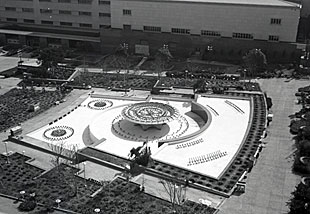

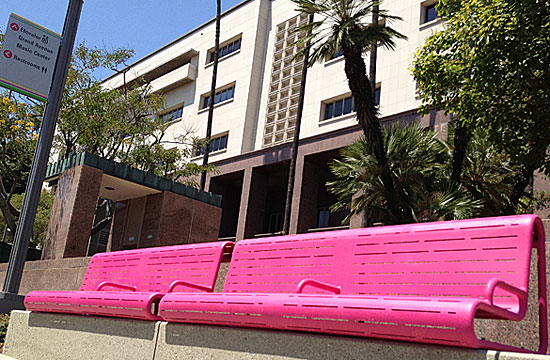
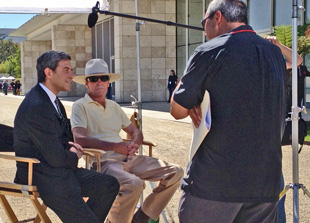
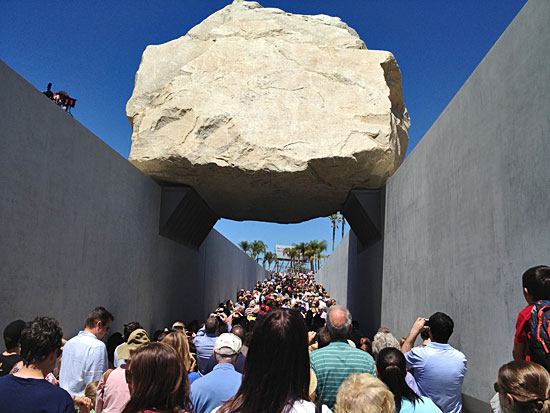










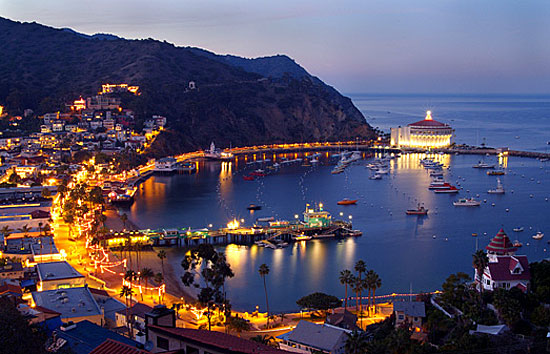
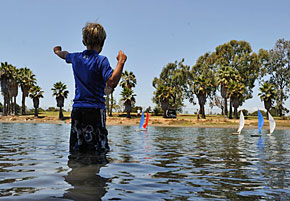
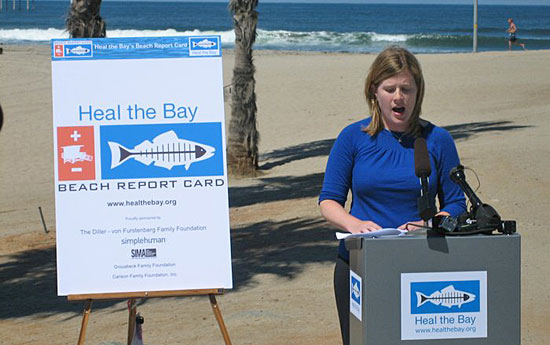
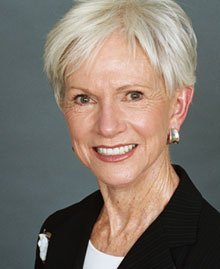
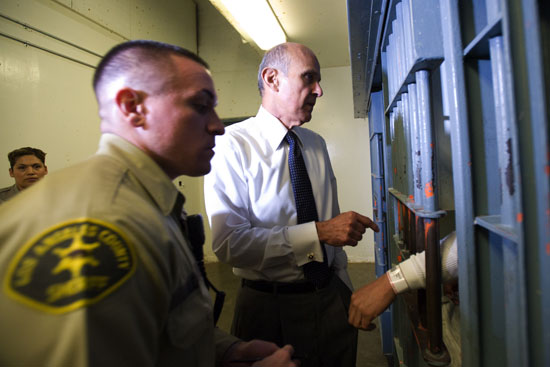
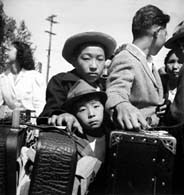
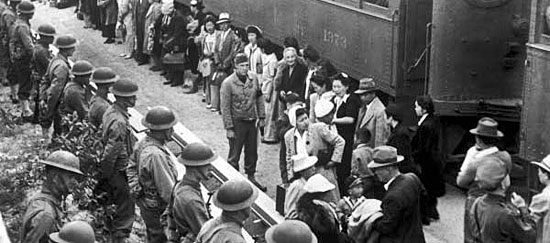







 Check for the latest closure information
Check for the latest closure information








